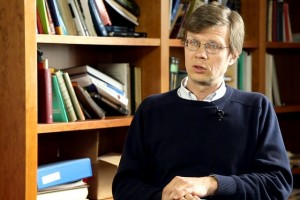“In principle, one can make an ideal conduct...
Physicist Markus Morgenstern on weak topological insulators, 2D materials, and spin pumping
How can we measure the presence of carbon monoxide by short laser pulses? What are the two main applications of silicon? Professor of Physics and Applied Physics at Harvard University Eric Mazur explains the result of the experiment with sulfur hexafluoride and silicon.
In the early 1990’s my group at Harvard was studying catalytic reactions using short laser pulses. The idea was to look at the birth of a molecule. And the molecule that we were studying was carbon dioxide. In every car there is a catalytic converter that makes sure that many carbon monoxide that is left in the exhaust is converted to cardon dioxide. So, you have CO for a carbon monoxide reacting with oxygen to form carbon dioxide which is not as dangerous as carbon monoxide.
We put the black silicon under the microscope, and it still looked black. Then we went to the electron microscope, and we saw that the surface of the silicon, which is normally completely smooth, had these spikes. That was the first big surprise. And then we started measuring the properties of that material, and we fell from one surprise into the other. It turned out that it was not only black in the visible – it was black in the infrared.
As we split off this detection company, my group became interested in understanding better the process. What is the physics behind it? How does the sulfur get incorporated? Is it sulfur or is it other materials that are important? It turnes out that the sulfur is actually very important, we were very, very lucky to actually select SF6.

Physicist Markus Morgenstern on weak topological insulators, 2D materials, and spin pumping

Physicist Mikhail Lukin on superposition principle, secure transmission of information, and quantum computer

MIT Prof. Nergis Mavalvala on Poisson distributed noise sources, squeezed states of light, and optical cavitie...